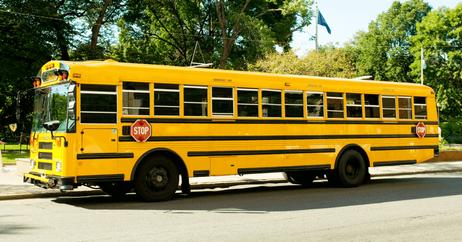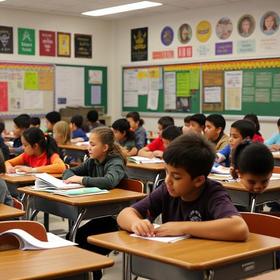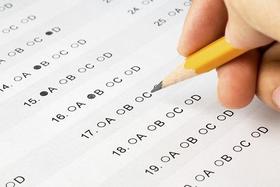While school campuses are home to fights and violence between students, new research has found that dangers exist off-campus as well. A rising number of investigations and reports are beginning to question the safety of public school buses. Considering that 47 percent of public school students use the bus to travel to and from school, many parents are expressing concern about the safety of their local school's bus system.
Are Public School Buses Safe?
In exploring the specific dangers faced by children utilizing the school bus system, the American Public Health Association (APHA) has found increases in violence on school buses, including verbal, physical, emotional, and sexual violence between students. While there are no major data reports on the total incidences of bus violence occurrences, BJC School Outreach conducted a private survey to question students of all ages about their fears and concerns of violence. According to the surveys, school buses are the second most likely location wherein a student may encounter bullying and/or harassment.
The National Highway Traffic Safety Administration states: "The school bus is the safest vehicle on the road—your child is much safer taking a bus to and from school than traveling by car. Although four to six school-age children die each year on school transportation vehicles, that’s less than one percent of all traffic fatalities nationwide. NHTSA believes school buses should be as safe as possible. That’s why our safety standards for school buses are above and beyond those for regular buses."
The maker of many of the nation's school buses, Thomas Built Buses states: "
Each school day, school buses transport nearly 25 million students to and from school. Yet, the yellow school bus remains the safest form of transportation on the roads today. In fact, riding a school bus is 13 times safer than riding in the family vehicle. And students are 70 times more likely to arrive at school alive if they ride the bus versus driving themselves or riding with friends, according to the National Highway Traffic Safety Administration.
One of the primary reasons school buses are so safe is because they meet 42 Federal Motor Vehicle Safety Standards (FMVSS) – that’s more than any other vehicle on the road! One of these safety standards is the use of compartmentalization, which is a unique form of “automatic” passenger protection with high-backed, closely spaced, well-padded, energy-absorbing seating specifically designed to protect children. This engineering concept is among the best safety innovations and is one of the main reasons that school buses are so safe – even without seat belts."
This video looks at school bus safety from the rider's perspective.
What Causes School Bus Dangers?
As the Public School Parent's Network reports, safety aboard a school bus is a mirror of the surrounding community. According to investigations, many school bus stops have become unsupervised hangout areas where children become vulnerable. Adding to this, "The bus ride has become a potentially volatile situation where 20 to 30 children are placed within a confined space, with limited supervision, and very little protection." With so many children forced together with only one adult supervisor, the bus driver, it is not surprising to learn that there are rising outbreaks of student misbehavior and fights.
One of the leading problems associated with bus safety and control is related to driver training. While school bus drivers are required to obtain a chauffeur's license and pass specific background evaluations, most bus drivers are not provided with any type of childhood behavior management training. As a result, many believe that bus drivers are generally not equipped or prepared to deal with the potential issues that can arise amidst groups of unsupervised students.
An effort to combat this concern has sparked some school communities to install cameras on school buses, ensuring that students are monitored and punished for any irresponsible acts. Yet, even with this step, some critics argue that cameras are not powerful enough to solve the dangers on buses. As the American Public Health Association reminds community members, a mere camera lens cannot capture every activity on a school bus. If a student is outside of camera range, then the student is essentially free from being monitored.
This video looks at school bus safety concerns.
Creating Safer Standards for Public School Buses
More than 24 million students are reported to ride the 440,000 available public school buses each year, and many of these students have no other options for getting to and from school. Fortunately, experts believe that the violence occurring on some of the public school buses can be solved and avoided.
Foremost, experts believe that bus drivers should be provided with more training opportunities, allowing drivers to learn more strategies for managing student behavior. Adding to this, as the APHA further reveals, student reports claim that when a bus driver establishes a bond with students, the overall behavior of students on a driver's bus tends to be much more positive. As a result, the APHA suggests, "Working to improve the overall climate in schools and developing a positive school culture is essential to safety for students both in school and on buses."
Adding to these steps, the APHA also recommends bus-safety measures that include:
- Assign seats for students on buses prone to misbehavior
- Ensure that negative behavior is followed with consequences
- Recognize and praise positive behavior
- Encourage parents to become active by meeting the driver
- Enforce policies that reward positive steps, instead of just negative punishments
- Allow bus drivers to enter into classrooms so that students can relate to the drivers in a different environment
- Provide troublemakers with opportunities to become positive leaders/peacemakers
Violence on school buses has a direct relationship with violence on campus. With parents and school leaders actively teaching students about the definitions and actions of bullying, experts believe that a school community can foster a stronger climate of safety and respect. Specifically, school leaders should teach students about the five different forms of bullying, which include verbal, emotional, gender, cyber, and physical bullying. Once this information has been clearly presented, a school community must subsequently outline and enforce clear consequences for any misbehavior.
Questions? Contact us on Facebook. @publicschoolreview











